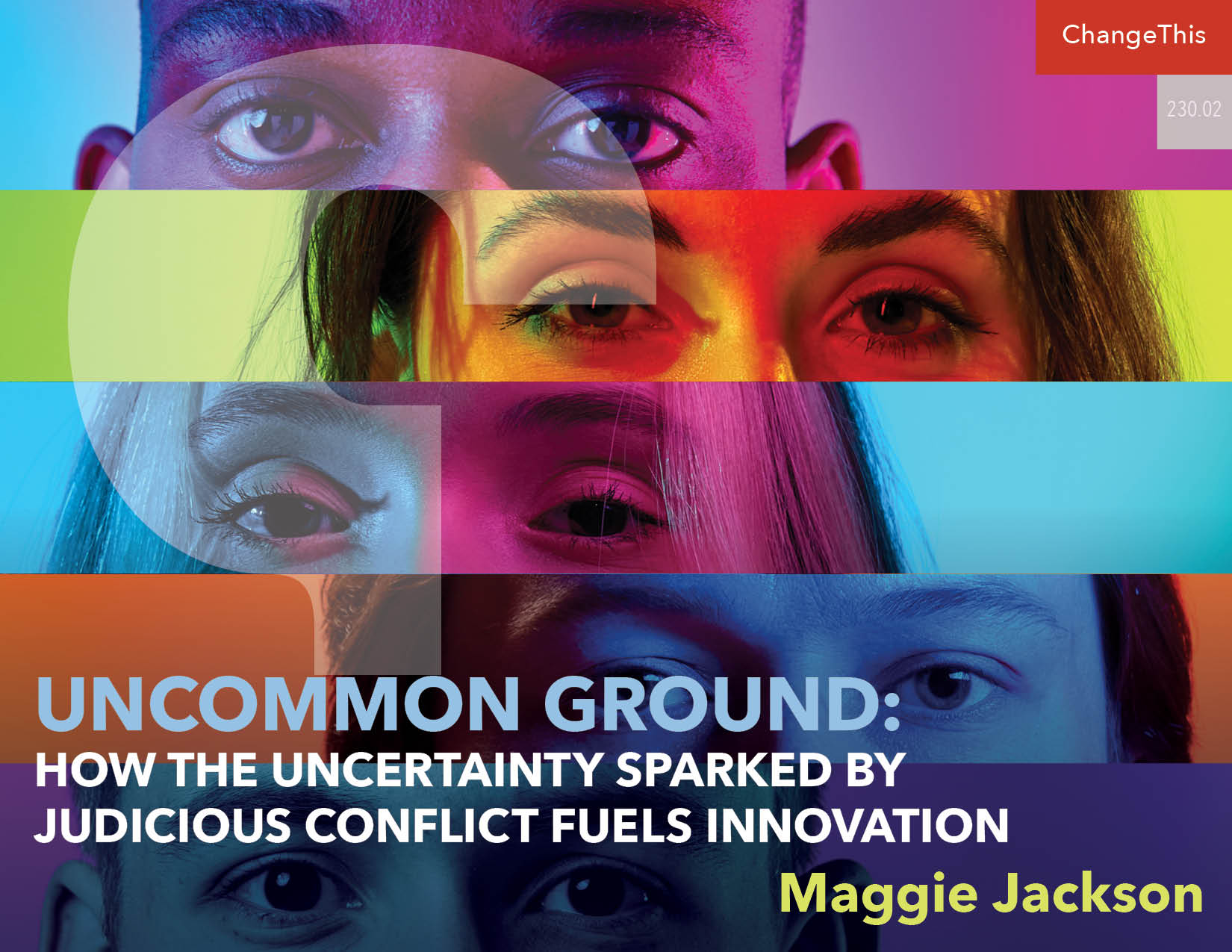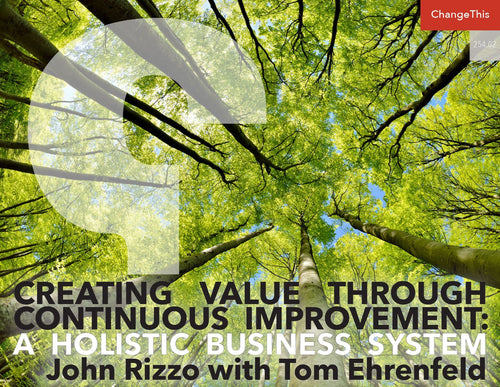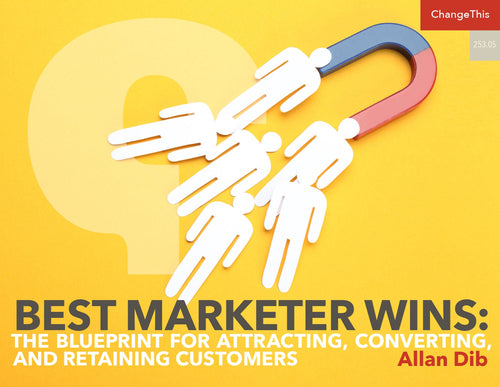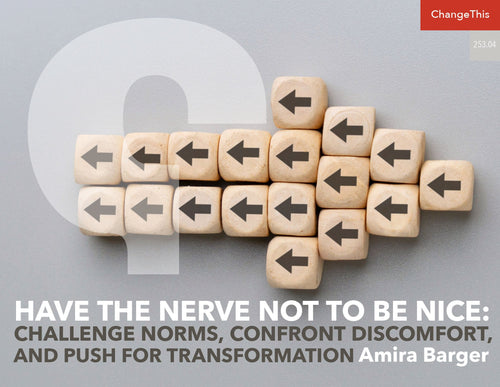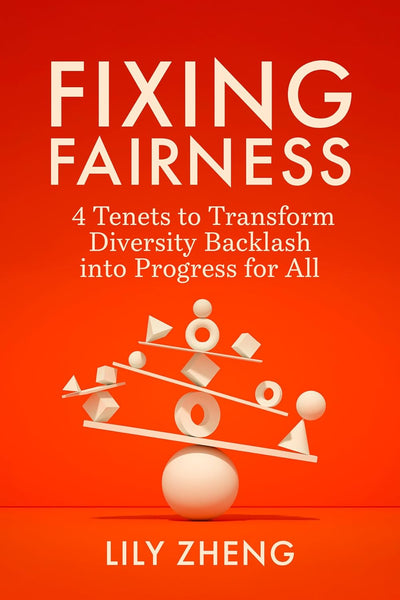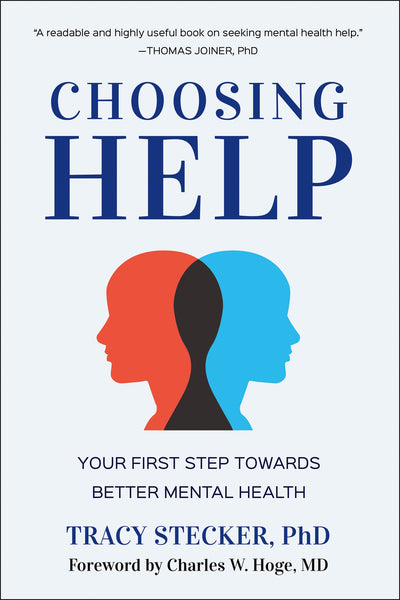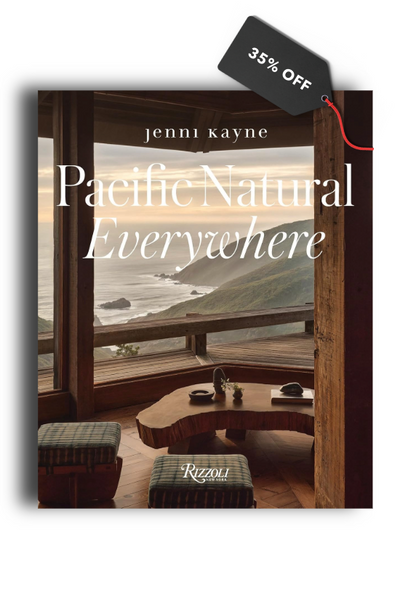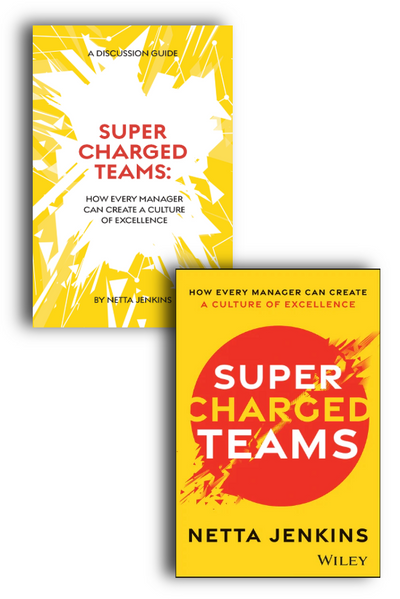Uncommon Ground: How the Uncertainty Sparked by Judicious Conflict Fuels Innovation
Well, do you think it could be impact generated? asks the first scientist.
No, not impact generated, ’cause, they may be a certain, well, I don’t know, says another member of the team.
You know, one thing you can say is that maybe these were, that there is a sulfate cement in there, ventures a third researcher.
◊◊◊◊◊
It’s a winter’s day in early 2004, and members of one of the most innovative teams in space history are gently arguing. They are part of one hundred or so scientists and engineers who weeks earlier had landed a pair of robotic rovers on Mars, seeking clues to the origins of life and to our own planet’s fragile future.
The Mars Explorer Rover (MER) mission was a paragon of collaboration and a harbinger of the multifaceted diversity that marks teams in our day. Varied in specialty, level of expertise, ethnicity, and location, the mission’s members worked across time and distance in shifting constellations that formed and re-formed as the work demanded. So as they were looking at Mars, psychologists, sociologists, and computer scientists were looking at them, armed with an arsenal of tools aimed at capturing for the first time the fine-grained dynamics of collaboration. The scientific discourse that seems at first like esoteric rock-talk turns out to be a window on what sociologist Janet Vertesi calls the productive zone of disagreement.
At a time when a majority of NASA’s missions to Mars had failed, one of the MER rovers had scored a hole in one. Opportunity safely settled in a small crater near a piece of exposed bedrock, a formation that offered elated scientists a glimpse of the planet’s original infrastructure, or its “geological truth.”
On the sixteenth day of Opportunity’s time on Mars, the first panoramic color photos of the landing area reached Earth, and the scientists based at the Jet Propulsion Laboratory in Pasadena, California, were digging into them. NASA’s goal for the mission was to “follow the water,” an essential ingredient for the genesis of life. Was the layered shelf of bedrock near the landing site that the scientists named Eagle Crater, formed by meteorites, ancient volcanic eruptions, or the slow hands of water and wind? Could it be suffused with sulfate salts, minerals left by water coursing through stone? An intense study of the mission’s early days by a trio of researchers revealed that roughly one in five of the team’s conversations involved brief “micro-conflicts,” most of which included expressions of uncertainty.
The best disagreements do not pit people against one another. Good friction is not a clash of entrenched opinions and assumptions, however right or wrong. Proficient collaborators cultivate judicious conflict as a way to discover “what they do not know in order to move forward and innovate,” wrote the researchers, who shot four hundred hours of video of the MER team’s first ninety days to tease out the secrets of its collaborative skills.
“At some point, you want to increase your uncertainty to find what you hadn’t thought of before—that’s where disagreement comes in,” information scientist Joel Chan, a study leader, tells me. This is how the jury realizes what evidence is missing and why an executive’s dissent can catalyze a colleague’s cognitive daring. MER lead engineer Adam Steltzner calls “holding on to the doubt” a critical part of working “at the edge of what is possible.”
The MER team’s prolific not-knowing led to effective problem solving, particularly of scientific matters, the researchers conclude. It was central to the mission’s ultimate success.
Consider the incident of the “dirt folks.” In 2007, some of the mission’s soil and atmospheric scientists were seeking to investigate mysterious dark streaks seemingly etched by wind-borne dust onto the walls of a crater that the rover Opportunity was then examining. But at a teleconferenced planning meeting, a top MER leader challenged the soil scientists’ request to begin an in-depth study of the streaks. Is this foray of use to any group but yours? he asked. The public micro-conflict that ensued was awkward yet profitable: scientists across disciplines quickly began to realize that such marks—and the planet’s soil itself—perhaps should be more of a shared concern. The mission’s “wind streaks campaign,” although small scale, nevertheless wound up revealing clues to patterns in the planet’s shifting climate.
Amidst friction, the surfacing of hidden unknowns—information new to some in the group, fissures in a team’s shared mental models—keeps a problem open as evidence accrues while allowing teammates to remain open to one another.
At this critical time, the use of seemingly trifling expressions of uncertainty, such as “maybe,” “possibly,” or “somewhat,” can go far in making disagreement productive. Hedge words alert a group that it is on unfamiliar territory and that there is more to know. They help nurture conversational receptiveness, a willingness to engage productively with opposing viewpoints.
In one series of studies, two hundred and forty senior state and local government executives participating in a management education program discussed controversial topics with a peer with contrasting opinions. Leaders who used hedge words and listened demonstrably to others’ views were rated by discussion opponents as having better judgment and as being more effective professionals and prospective teammates than those who offered harsher responses, including words such as wrong and therefore. Giving voice to not-knowing is particularly crucial in virtual work, where conflict tends to remain unacknowledged due to lower overall levels of information sharing.
During the MER mission’s early days, expressions of uncertainty during episodes of micro-friction were followed by the resolution rather than the escalation of conflict, according to the study by Chan and colleagues. Maybe there is a sulfate cement in there, a scientist asked early in the mission. And a few days and many disagreements later, the team found this aqueous material in astonishingly high quantities in Eagle Crater’s bedrock, one of the final points of proof needed in order to announce the historic news: water had flowed on ancient Mars.
Two years later, a feisty young Princeton sociologist began embedding herself into the working life of the MER project. Due to the rovers’ unexpected longevity, the enterprise had by then turned from a ninety-day scientific sprint into a multiyear investigation.
Janet Vertesi ultimately studied the team through 2017, nearly the full life of the endeavor. She sat in on tactical planning sessions and coffee klatches, attended scientific conferences and crisis meetings, interviewed top investigators and graduate students alike, and began to make discoveries of her own. The exploration of differences, she realized, is work that cannot be left to chance.
As time passed, the rovers’ guardians developed tremendous solidarity with one another. Vertesi calls the team collectivist; their proudly worn lanyard badges, mission tattoos, and logo clothing testified to a strong group identity. But the group counterbalanced the risks of belonging by setting up practices to preserve a culture of conflict, she observed. In the workplace, the jokes and sideline chatter that indicate distracting efforts to privilege bonding over debate were rare, she observed.
And every meeting, in person or virtual, ended with the “listening ritual.” Are there any other comments, any other perspectives? the meeting host would ask. Far from being antagonistic toward people who then offered a conflicting view, such “countering” was lauded during both workday interactions and high-level formal meetings.
In many organizations, someone who disagrees “can be seen as a pain, a problem, or a jerk,” she told me. “But there, you demonstrated that you were a committed member of the team by trying your hardest to bring in alternative perspectives,” especially those that no one else had thought of before.
Nevertheless, curbing the innate human longing for cozy cohesion demands constant vigilance and a ceaseless willingness to court uncertainty, the Mars rover team discovered.
In 2007, faulty commands were uploaded to one of the rovers, a fiasco that could have led to the demise of a robot worth hundreds of millions of dollars. The project’s top leaders put the robot temporarily to sleep, canceled all scientific operations, and gave the entire staff a long weekend off for reflection. Then they called the team’s first “all-hands meeting,” where they reiterated in person and by teleconference that their work could not progress unless everyone was willing, as the mission’s project manager said, “to raise our hand and say, ‘I don’t know,’ ‘I don’t understand.’”
An assistant with no engineering background should feel free to challenge a lead mission manager if something “looks funny,” the principal scientific investigator added. We’re known for “the rigor of the questioning we all go through when we are trying something very challenging,” he said. “And I’d like to get that back.” Then they opened up the call for discussion, and scientists, engineers, students, and support staff debated for two hours about how to better occupy the enlightening space between yes and no.
“Uncertainty and conflict were how the mission worked,” says Vertesi, who watched and listened year after year as the MER team pieced together clues to the history of a distant planet where fiery volcanoes, rippling lakes, and tumbling rivers left their mark billions of years ago. “This is what allowed MER to be able to keep going so long, to be extremely innovative even a decade into the mission,” she tells me. “That’s why we are still talking about them years later.”
Almost wistfully, she adds, “They saw themselves as explorers and [the mission] as an adventure and a challenge… It was a very exciting and a very positive place to be.”
Positive? Her words may seem at odds with our perceptions of difference and disagreement. By countering others, we rupture the cozy cohesion fueled by similarity and mutual affirmation. Decision-making slows. A shared view of the world is at least temporarily shattered. Often, we instead prefer to linger on the loveseat of accord. But when differences are no longer silenced or ignored, something far greater than mere comfort or ease can emerge.
Groups that cultivate judicious conflict, dissent, and mutual criticism tend to be high-performing, growing evidence reveals. A recent study at a company that manages long-term care complexes for elders revealed that employees who frequently experience mild conflict—debate and the expression of differences versus full-on clashes—across departments gain valuable information about coworkers’ perspectives from the exchanges. This dynamic leads them to be far more interested, active, excited, and energized both during the encounters and in their jobs overall than coworkers in harmonious settings. In contrast, management teams that experience little conflict lack the “energy” of those that constantly challenge one another, and their firms perform less well, an analysis of Silicon Valley companies reveals.
Groups that skillfully nurture friction to explore what they do not know feel unease alongside a sense of challenge. They find inspiration in heeding the voices we so often ignore. Falling on and off the same page is essential, after all, to figuring out the world as it is, not as we wish it to be.
Asks novelist and essayist Marilynne Robinson, “Where did the idea come from that society should be without strain and conflict, that it could be… stable and harmonious?”
There always will be times when we need to still the clamor and see as one. That can be an end goal in collaboration yet should not be the norm. When faced with life’s complexities, the succor of hurried agreement lulls us into complacency, blinding us to the distinctions between our and other points of view.
Differences brought to life, in contrast, break the spell of assent, propelling a group onto uncommon ground where the exploratory work of not-knowing together can begin. Assumptions are shaken, inaccuracies are caught and corrected, missing evidence surfaces, and multiple perspectives are revealed when we dare to disagree. We emerge with a sense of what we do not know—and with an understanding of true collaboration as more intricate, uncertain, and demanding than we too often would like to admit.
Why come together to simply become less than the sum of our remarkable parts? That is the most perilous form of we.
Adapted from Uncertain: The Wisdom and Wonder of Being Unsure, published by Prometheus. Copyright © 2023 by Maggie Jackson.

